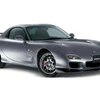The all electric Lotus set to turn heads in 2021

- Iconic Norfolk manufacturer set to launch most powerful production car ever
- The first all-electric Lotus
- Award-winning before it even hits the road
When you think of Lotus you think of that age old “simplify, then add lightness” mantra of founder Colin Chapman. And for a long time, that ethos has been very much the way things were done at Lotus’s HQ in Hethel, Norfolk, with lightweight pocket rockets providing plenty of thrill on Britain’s endless network of country roads.
The Elise, for example, produced from 1996 weighed in at under 900 kilos and was normally paired with a fairly simple 1.8 litre engine from Rover or Toyota. The Exige built from 2000 followed similar lines, tipping the scales at just over 900 kilos and again mated with a 1.8 litre engine.
Things got slightly more complicated in 2010, with the Evora being introduced to the world. This time, Toyota V6 engines were chosen, not quite as simple as a 1.8 litre Rover, but compared to most supercars, this was still fairly basic. But the extra weight provided by the block, plus the fact this is a much bigger car with rather less plastic resulted in a weight of over 1,250kg, so much for ‘add lightness,’ then. But despite this, compared to other cars of its type, this was still a featherweight, and one of the best GT cars that money could buy.
Having finally built something weighing more than a tonne, there’s now no stopping Lotus, for their next model, due for release in 2021, goes against pretty much every convention the company has ever followed.
It’s called the Evija, which apparently comes from ‘Eve’ of the Abrahamic religions, meaning ‘alive’ or ‘living’. It’ll weigh almost 1,700kg, bigger still than the Evora, but will pump out almost 2,000 horsepower and reach over 200 miles an hour (329km/h).
The catch? It’s all-electric, the first of its kind ever produced by Lotus, and despite its rather hefty bulk (by Lotus standards), it’s expected to be the lightest EV hypercar ever produced and is marketed as the world’s most powerful production car.
A range of 215 miles is anticipated from a full charge, though expect less if you’re giving it the full beans, with no less than four electric motors (placed at the wheels) providing the oomph.
Lotus estimates that the car will hit 100km/h in less than three seconds, and 300km/h in less than ten seconds. With that sort of output, it is relieving to hear that the batteries are said to be the world’s fastest charging; Lotus reckons that an 80% charge can be achieved in just 12 minutes, and a full charge in 18.
The car is already an award winner, scooping the ‘Product Design of the Year’ accolade at the International Design Awards, with members of the IDA jury commenting that the Evija “paves a way towards a more sustainable future whilst embodying an exceptional aerodynamic aesthetic”, and that “its seductive style elevates the Evija to be the world's most premium sustainable car.”
And it is easy to see why it’s won an award, with an exceptional aerodynamic aesthetic, particularly at the rear which looks more akin to a spaceship than a road car. The front end features a bi-plane front splitter, distinctive fenders and miniscule headlights that are the first laser lights for both the dipped and main beams.
Side mirrors are a thing of the past, with these replaced by screens in the cabin, while active aerodynamics are also incorporated at the rear.
The interior is every bit as impressive, with an F1 style steering wheel, loads of visible carbon fibre, a distinctive centre console and plenty of Alcantara.
Of course, being all-electric means the usual noise associated with hypercars will be missing, but the management at Lotus is one step ahead of you. They’ve enlisted the help of Patrick Patrikios to create an audio soundtrack for the car, based on the V8 Ford DFV engine tones of the legendary Type 49 F1 machine from the late 1960s. Not only has the British music producer created an artificial engine tone, but also the usual interior noises including seat belt warnings and indicator clicks.
In all, this promises to be one of the most revolutionary cars to emerge from the Hethel production lines in decades. Production is due to start any time now, and the asking price is a cool £1.7 million, with just 130 units being produced. So you’ll need a wallet bigger than your house, and to act quickly in order to bag one of these epic machines!
Richard Randle is a motorsport PR professional working with the UK’s top racing circuits and the UK’s premier single-seater category, the BRDC British F3 Championship.


